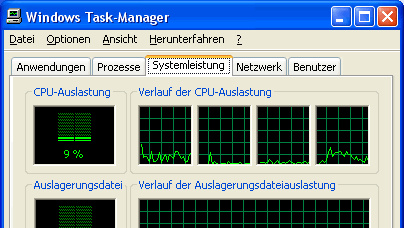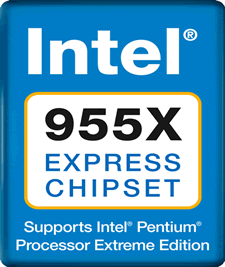Pentium D 840 und Extreme Edition 840 im Test: Erste Dual-Core Benchmarks

Vorwort
Intel – das stand bis vor einigen Monaten für absolute Verschwiegenheit bis zur offiziellen Produktvorstellung. Zukünftige Prozessoren? Keine Aussage! Interne Chipsatzbezeichnungen? Nie gehört! Umso erstaunlicher, dass der Prozessorriese seit einigen Wochen genau in die entgegen gesetzte Richtung fährt. Prozessoren der kommenden Jahre werden lauffähig und photogen der Fachpresse auf dem IDF präsentiert und in Pressemitteilungen wird freizügig mit Produktkennungen und -namen jongliert.
Der heutige Tag stellt den zwischenzeitlichen Höhepunkt im Rahmen der neuen Firmenpolitik dar, gab Intel der Presse im Vorfeld doch nicht nur Informationen und Bilder, sondern ein komplett lauffähiges Dual-Core-System mit Intel Pentium XE-Prozessor und i955X-Chipsatz an die Hand, um schon heute, am Montag, 4. April 2004, das für den Sommer erwartete Flaggschiff der Pentium-Ära genauer unter die Lupe nehmen zu können.
Intel selbst bezeichnet die heute weltweit mit Hilfe einiger System gestartete Medienoffensive als „Technology Preview“ und nicht als Produktvorstellung, denn diese wird erst dann über die Bühne gehen, wenn es das Produkt auch wirklich zu erwerben gibt. Vielmehr möchte man schon vorab über zukünftige Entwicklungen informieren (lassen) und so selbstverständlich auch dem Konkurrenten ein wenig den Wind aus den Segeln nehmen. Seit Monaten scheint fest zu stehen, dass die Einführung der Dual-Core-Prozessoren von AMD und Intel wohl eines der bedeutendsten Prestige-Duelle der jüngsten Vergangenheit darstellen dürfte. Der heutige Tag dürfte diese Vermutung noch einmal eindrucksvoll unterstreichen.

Wir wollen uns auf den nachfolgenden Seiten zurerst den technischen Grundlagen und im Anschluss ersten Benchmarks des Intel Pentium Extreme Edition 840 (und auch des Pentium D 840) widmen, weisen aber ebenfalls noch einmal darauf hin, dass es sich lediglich um eine Vorschau und keinen finalen Test handelt!
Lesezeichen
Als weiterführende Lektüre empfehlen wir zu diesem Preview insbesondere unsere Artikel zur 600er-Serie des Pentium 4-Prozessors und der Pentium 4 Extreme Edition mit 3,73, sowie das bereits im Jahr 2002 verfasste Spezial zur Hyper-Threading-Technologie.
